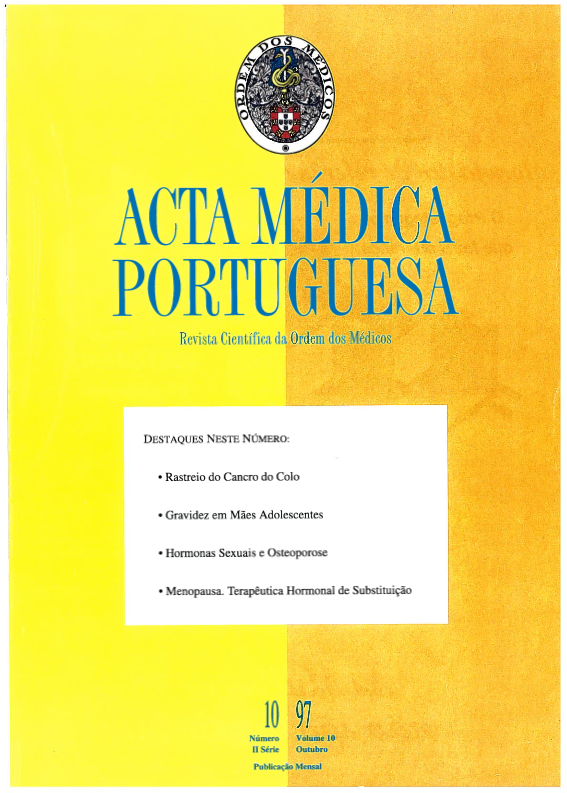Hormonas sexuais e osteoporose: a perspectiva fisiológica da prevenção e terapêutica.
DOI:
https://doi.org/10.20344/amp.2478Resumo
Estrogen deficiency is the main cause of post-menopausal osteoporosis and hormone replacement therapy is consensually regarded as the first line choice for its prevention. Hormone-replacement has also been shown to prevent bone loss associated with rheumatoid arthritis (RA) and corticotherapy. The rationale for its use in RA is reinforced by evidence of beneficial effects on disease activity. Estrogens also have bone-protective effects in males. C-19 progestagens seem to potentiate the skeletal effects of estrogens whereas C-21 derivatives appear to have no significant influence. Progestagens may be particularly useful in the prevention of steroid-induced osteopenia. Testosterone is an effective treatment for male osteoporosis associated with hypogonadism and is also promising in the treatment of osteoporosis in aged eugonadal males. The association of this hormone potentiates the effects of estrogens on bone mineral density in post-menopausal women. However, anabolic androgens have been preferred in this condition, due to a lower androgenizing effect. They represent a valid therapeutic alternative, particularly in cases of cortical osteoporosis with low bone turnover and in the aged and frail. In general, the different modalities of hormonal therapy clearly deserve a higher degree of preference in the treatment and prevention of osteoporosis than common present practice in our country. It is time to reassess this matter, clear unfounded fears and reinforce the physiological and scientific foundations of our therapeutic options for osteoporosis.Downloads
Downloads
Como Citar
Edição
Secção
Licença
Todos os artigos publicados na AMP são de acesso aberto e cumprem os requisitos das agências de financiamento ou instituições académicas. Relativamente à utilização por terceiros a AMP rege-se pelos termos da licença Creative Commons ‘Atribuição – Uso Não-Comercial – (CC-BY-NC)’.
É da responsabilidade do autor obter permissão para reproduzir figuras, tabelas, etc., de outras publicações. Após a aceitação de um artigo, os autores serão convidados a preencher uma “Declaração de Responsabilidade Autoral e Partilha de Direitos de Autor “(http://www.actamedicaportuguesa.com/info/AMP-NormasPublicacao.pdf) e a “Declaração de Potenciais Conflitos de Interesse” (http://www.icmje.org/conflicts-of-interest) do ICMJE. Será enviado um e-mail ao autor correspondente, confirmando a receção do manuscrito.
Após a publicação, os autores ficam autorizados a disponibilizar os seus artigos em repositórios das suas instituições de origem, desde que mencionem sempre onde foram publicados e de acordo com a licença Creative Commons









